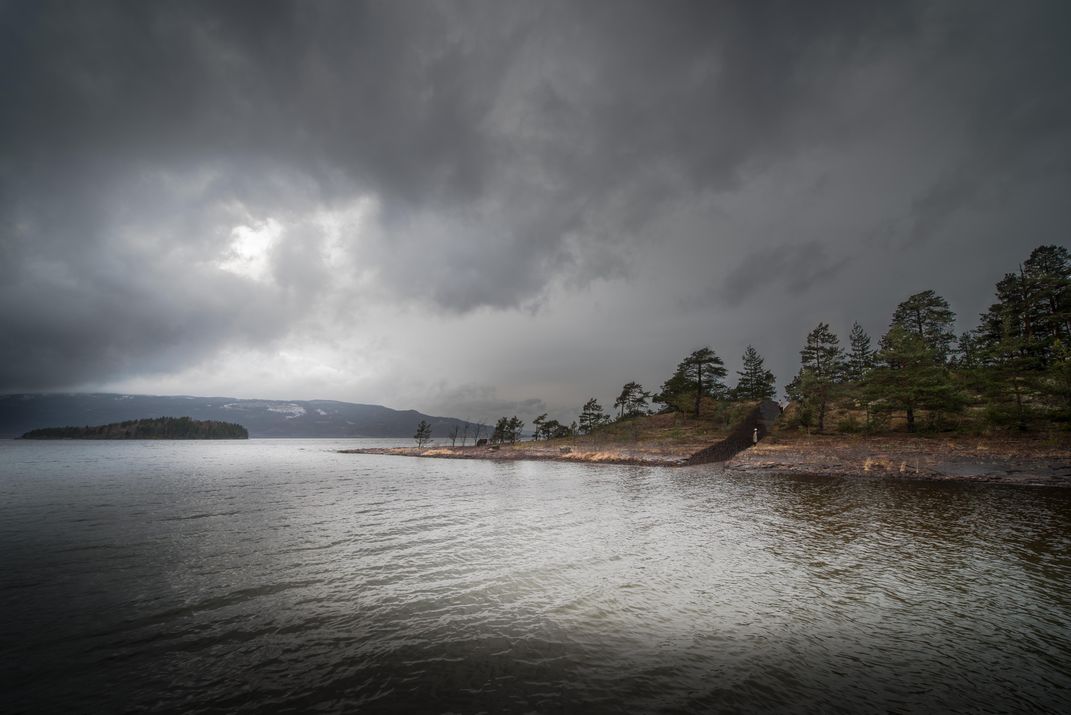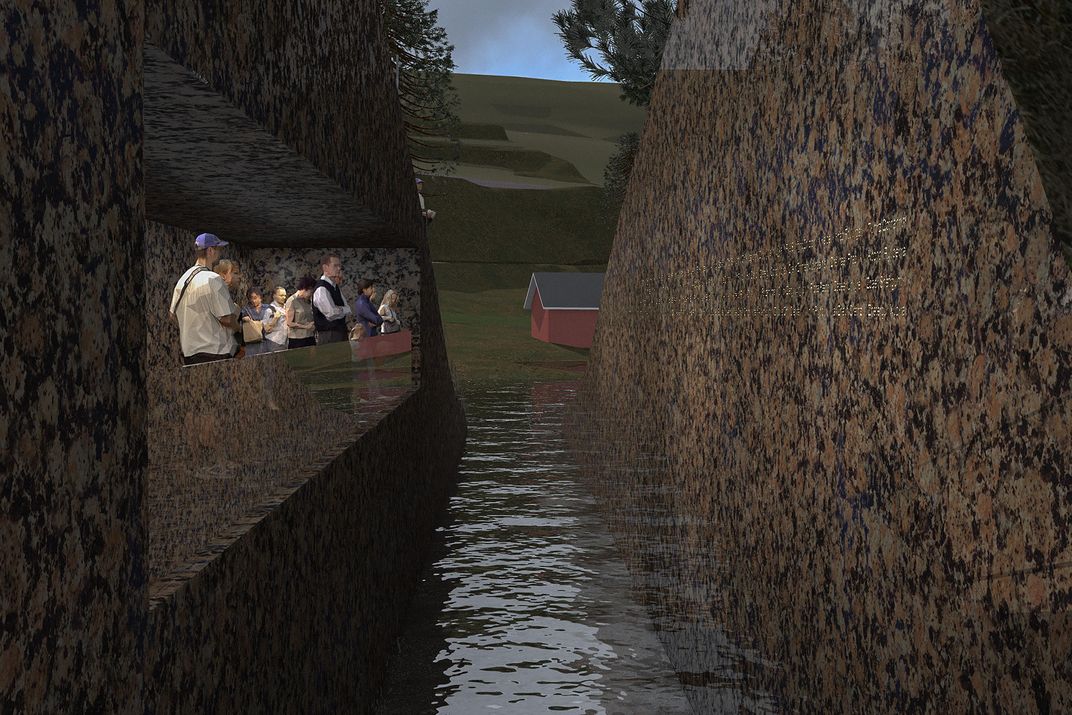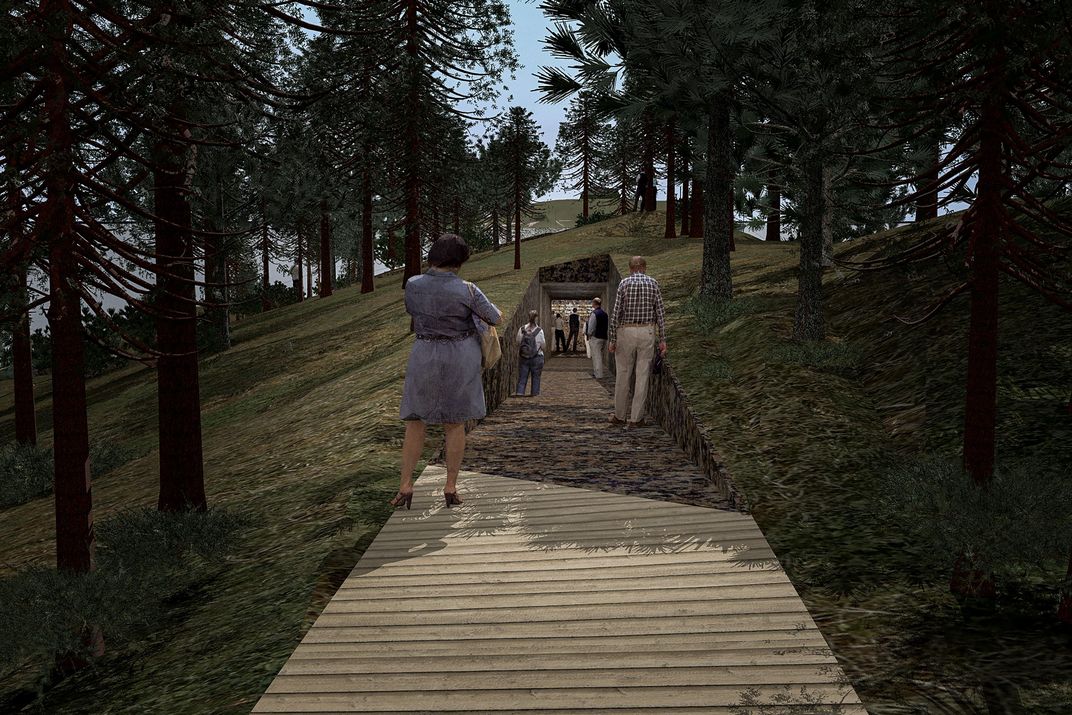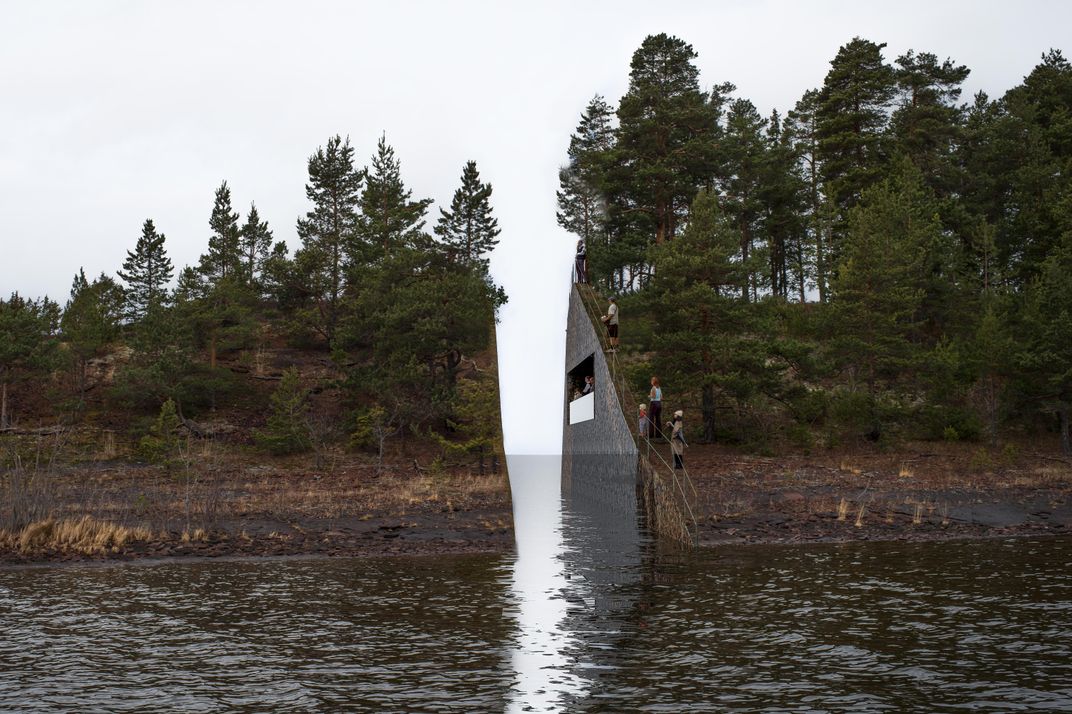An Artist Will Slice Up a Peninsula to Remember Norway’s 2011 Massacre
“Memory Wound” will evoke the brutal losses of the July 22 tragedy
On July 22, 2011, part of Norway’s heart was ripped away when a gunman killed 77 people at a summer camp for teens, injuring at least 200 others. The chilling mass murder traumatized the tiny nation, where it is estimated that one in four people knew someone affected by the shootings. Now, five years after the tragedy, reports Karen Gardiner for Hyperallergic, an artist is preparing a memorial that literally severs a Norwegian peninsula in two.
Jonas Dahlberg is a Swedish artist selected by a Norwegian committee to create one of three memorials to the victims, writes Gardiner. His controversial memorial, “Memory Wound,” will slice through the Sørbråten peninsula across from Utøya, where Anders Behring Breivik committed the shooting.
The memorial’s premise is deceptively simple: It will take an 11.5-foot slice from the peninsula, inscribe the names of the victims in the stone walls the slice opens up and install a tunnel and viewing area on one side of the peninsula. (Stone from the project will also be used at a memorial in Norway’s capital.) Visitors will be able to gaze across at the victims’ names while standing next to what Koro Public Art Norway, which will manage the project, calls “a ‘wound’ in nature that will evoke in a concrete and brutal manner the loss of the young people killed at Utøya.”
On his website, Dahlberg writes that he wants the memorial to evoke the “abrupt and permanent loss” of the victims, taking victims on a journey of contemplation. He tells Gardiner that the names visitors read will be visible, but “forever unreachable”—a reflection of the devastation and loss wrought by what is simply referred to as “July 22” in Norway.
The memorial hasn’t been embraced by everyone, though. It took the Norwegian government years to move forward with the project, and residents of Hole Township, where it will be located, have sued to prevent it. As Nina Berglund reports for newsinenglish.no, locals, many of whom helped with rescue efforts, are against the memorial because they feel like having the monument in perpetual view will harm their mental health.
But the Norwegian government and Dahlberg have vowed to press ahead. Dahlberg tells Gardiner that it’s time to deal with the events of July 22—and, five years after the atrocities, that process is continuing with the memorial’s construction. Though the project has been delayed by public opposition, Public Art Norway is pushing forward with the project and it is scheduled for completion in time for the sixth anniversary of the tragic attack next year.
/https://tf-cmsv2-smithsonianmag-media.s3.amazonaws.com/accounts/headshot/erin.png)




/https://tf-cmsv2-smithsonianmag-media.s3.amazonaws.com/accounts/headshot/erin.png)